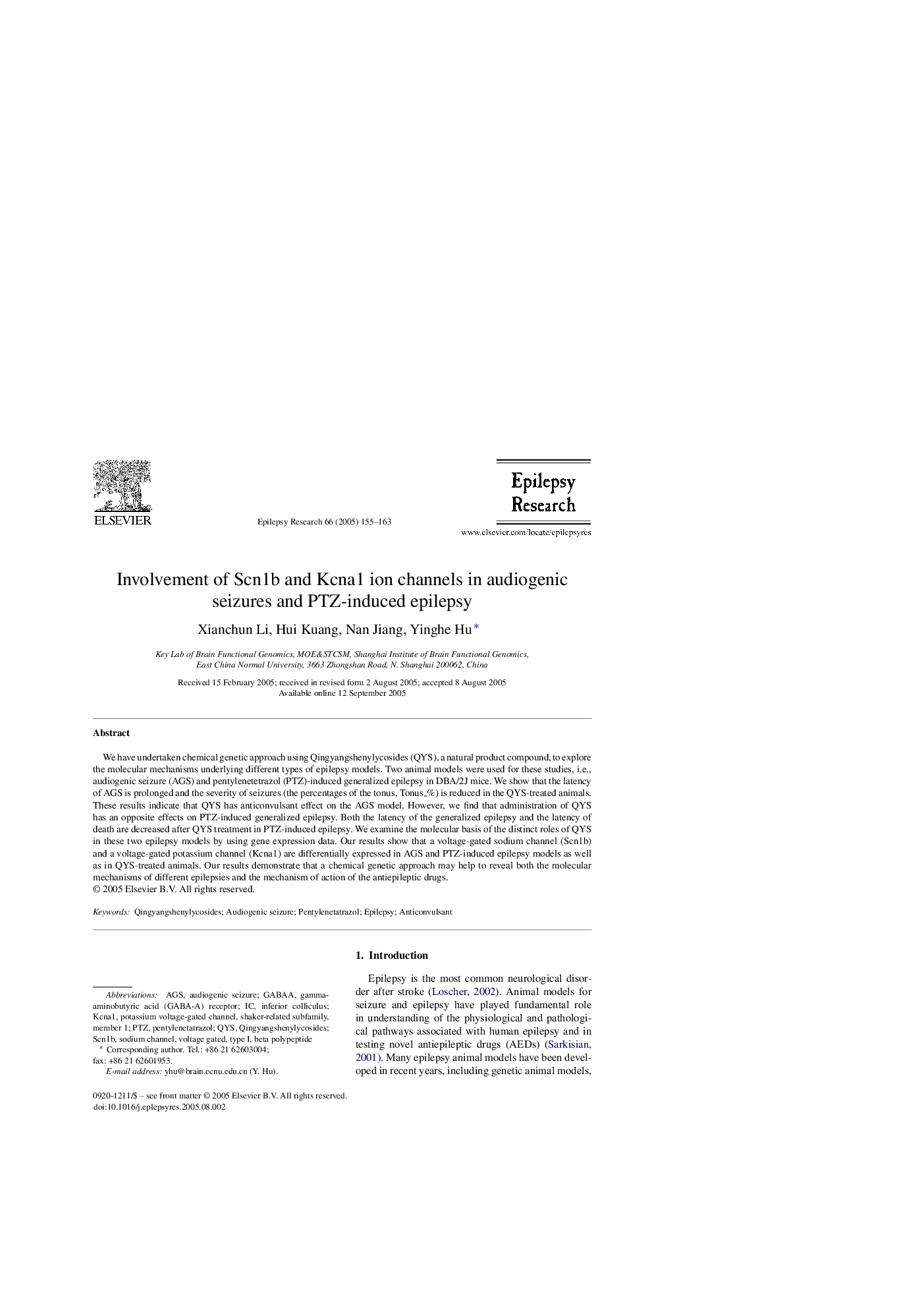| Article ID | Journal | Published Year | Pages | File Type |
|---|---|---|---|---|
| 9191201 | Epilepsy Research | 2005 | 9 Pages |
Abstract
We have undertaken chemical genetic approach using Qingyangshenylycosides (QYS), a natural product compound, to explore the molecular mechanisms underlying different types of epilepsy models. Two animal models were used for these studies, i.e., audiogenic seizure (AGS) and pentylenetetrazol (PTZ)-induced generalized epilepsy in DBA/2J mice. We show that the latency of AGS is prolonged and the severity of seizures (the percentages of the tonus, Tonus_%) is reduced in the QYS-treated animals. These results indicate that QYS has anticonvulsant effect on the AGS model. However, we find that administration of QYS has an opposite effects on PTZ-induced generalized epilepsy. Both the latency of the generalized epilepsy and the latency of death are decreased after QYS treatment in PTZ-induced epilepsy. We examine the molecular basis of the distinct roles of QYS in these two epilepsy models by using gene expression data. Our results show that a voltage-gated sodium channel (Scn1b) and a voltage-gated potassium channel (Kcna1) are differentially expressed in AGS and PTZ-induced epilepsy models as well as in QYS-treated animals. Our results demonstrate that a chemical genetic approach may help to reveal both the molecular mechanisms of different epilepsies and the mechanism of action of the antiepileptic drugs.
Related Topics
Life Sciences
Neuroscience
Neurology
Authors
Xianchun Li, Hui Kuang, Nan Jiang, Yinghe Hu,
